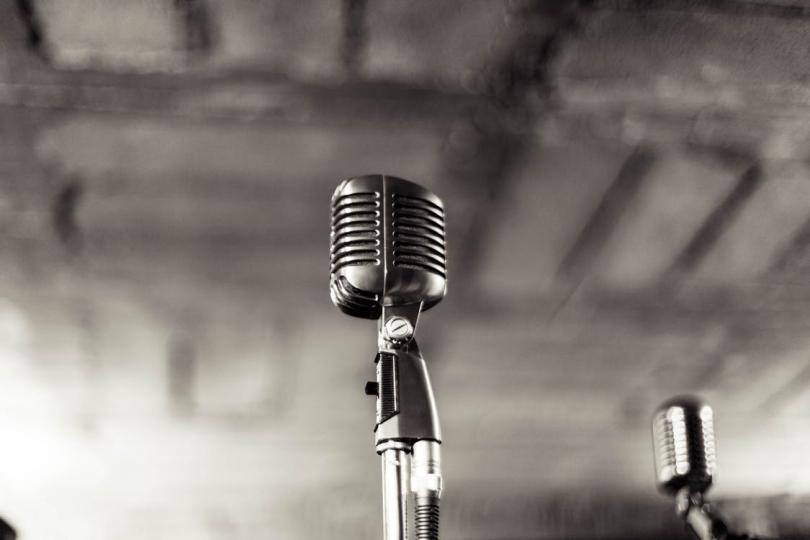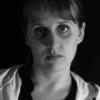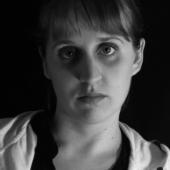Listening to the Fringe

I walk over a hill and discover a dense thicket in the middle of the grass. It pleases me, somehow, to find this wild place. I approach it, examining its brush and leaves when I hear something breathing over my shoulder, then a the unmistakable howl of a wolf. I freeze. On my right, I hear another wolf join in, then another to my left, and I turn my head involuntarily as the sounds of the wolf pack surround me, howling into the wilderness.
Of course, I'm not actually in the wilderness. I'm traipsing through Kenwood Park with a walkman, listening to Lydia Blaisdell's Bear Eats Bear, a “retro-future audio adventure.” The sounds of the forest mix with women's voices, recalling cultural artifacts and bits and pieces of the new, broken world she's created.
It seemed a little silly at first, but there's something about the wall of sound in your headphones and the whir of the tape deck at your hip that gives the world a sort of of weight. It's seductive. Even without a true visual component, your mind is eager to fill in the gaps. I settle by a tree, turning my head so I can't see the road or the tennis courts, or any of the other Fringe-goers listening to the same world, and let myself sink into the fiction.
Sound is one of my favorite tools as a theater maker. Part of this is due to its economy. I can't afford a full sized steam train, for example, but if I can play the sound of one, chances are the audience will build it for me on stage. With the limited set up and strike time of the Fringe Festival, producers are wise to use sound to help create their worlds.
Another show that makes excellent use of sound is Ghoulish Delights' The Mysterious Old Radio Listening Society . It's a very simple stage picture: five performers with microphones, music stands, a few props, and a keyboard. Visually, not much changes, but with their voices and music and a few pairs of shoes, this ensemble conjures ghosts and gibbering things out of the air.
Other audience members mentioned closing their eyes to really focus on the sound, to try and fully take in the nuance of the performance. I kept my eyes open, watching them slam the tiny door or turn what looked like a long cookie cutter into a mystical voice modulator.
Ambitious sounds don't always work out, especially in acoustically weird spaces. Maximum Verbosity's Serpentine is a dense verse tragedy mixing Greek mythology with personal storytelling about the transgender experience. The prophecies of the double gendered protagonist are mixed with a booming, creepy voice that echoes so forcefully through the tall, shallow Strike Theater stage that it's completely inaudible. Given that the words of the prophet carry so much weight, I was disappointed in not being able to understand them.
This has been a great Fringe for my ears. From Dameun Strange's otherworldly ship-scape in Gravitational Collapse, to the trans-dimensional being who introduces the storytelling show Spec, to the music boxes in The Memory Box of the Sisters Fox, to the frustration of a call going to voicemail in US-52 South, to the calming Enya breaks in Ronald Reagan Time Traveler, sound has taken center stage, so to speak.
The sound moment that brought me the most unbridled joy, however, came in the climactic swim routine of Raw Sugar's Synchronicity. Set in 1993, the play follows a team of bickering twelve year olds preparing for a synchronized swimming competition. When it's finally time for the performance, they ready themselves by a blue cloth pool and their cue music comes over the speakers.
At first I don't recognize it, just hopeful string music under some dialogue. Then, I hear someone say, “Do you trust me?” In an instant, it clicked, and the tiny child hidden inside my brain squealed “A WHOLE NEW WORLD!”
Sure enough, the love duet from Aladdin rang out, complete with the stork squawk and horse stampede of the movie scene. I was suddenly transported back to my childhood living room, where I wore out the VHS sitting on a magic carpet made of towels. Of course, this would be the most epic, romantic song to synchronized swim to in 1993. And as the actors kicked and doggy paddled into their formations, a part of me swum with them, quietly singing along under my breath.




